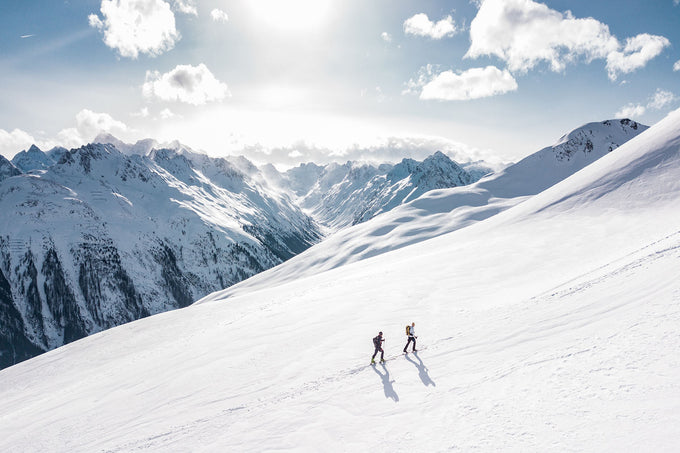Fact Or Fiction? Sunburn In Winter?

A common misconception of the sun during the winter months is the thought that one can not get sunburnt during winter. This is somewhat understandable when it is cold and we are bundled up in our coats, hats, gloves, and pants, we stop thinking about sun exposure. However, contrary to what most people think, the sun’s ultraviolet rays can be just as damaging to your skin when it's cold and cloudy outside. In the right conditions during winter you can easily sustain sun damage just as easily as during the summer!
According to the Skin Cancer Foundation, snow and ice can reflect up to 80% of the sun's UV rays, which means that you can get hit by the UVA & UVB rays from two angles. It is important to be hyper aware of exposure to the sun when you are doing outdoor winter activities like snowshoeing, snowboarding, or shoveling snow. Being exposed for long periods of time can result in DNA damage and potentially lead to skin cancer down the line.
What to do to stay protected during winter:
- Check The UV Index: Make it a common practice to check the UV Index on a daily basis. It will help provide a better understanding of the sun's intensity that day, which can help you prepare for your outdoor activities. As a general rule try to limit your time in the sun from 10am – 4pm.
- Altitude: It is easier to get sunburned at higher altitudes. UV exposure increases roughly 4% for every 1000 ft gain in elevation. This is important to consider as a day on the mountain can be just as dangerous as a day at the beach.
- Cover Up: During winter, it's easy to cover up because it's so cold! With this, however, the most exposed sections of your body are your face, head, and neck as they are exposed year-round. Make sure to wear UV-blocking sunglasses and a broad-brimmed hat to protect your scalp and keep you warm.
- Reflective Surfaces: Be aware of reflective surfaces like water, ice, snow, concrete, and sand as UV rays will be coming from above and below.
Overall getting sunburnt during the winter months is no myth. Make sure you are taking the proper precautions and be aware of your surroundings. It is important to take steps to be protected during winter and year-around to stay sun-safe and have fun under the sun.







